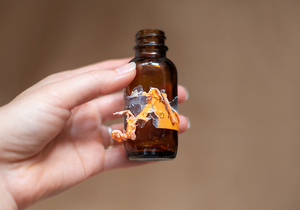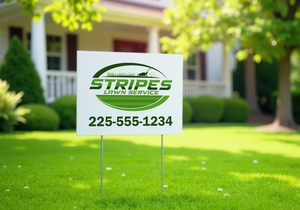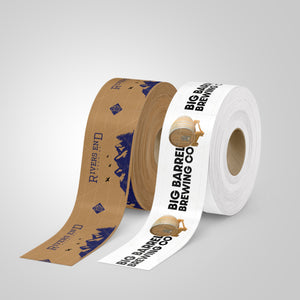New Year, New You: Keys to Rebranding Your Business in 2025

As we kick off the new year, you may be thinking about how to make this year bigger and better than the last. For restaurants, this might mean new menu items. For breweries, a larger presence at festivals or local events. Whatever it is, a new year means a fresh start.
And for many, a fresh start means a rebrand. After all, constant evolution is the key to continued success and growth in the small business world. As a business owner, if you’re not self-evaluating regularly, you’re getting left behind. You know what they stay — stay irreverent or become irrelevant.
But while a new menu item or increased marketing budget is a fairly easy task, a rebrand isn’t. It doesn’t just happen and if you are deciding to undertake the often arduous process of rebranding, you need to take a careful and methodical approach.
To help, we’ve put together a list of tips and key considerations to help make the rebranding process easier.

How to Rebrand Your Business
The first thing to remember when rebranding is to avoid hopping on the latest trend. Because trends are just that, trends.
Smart business owners must look at the landscape and determine what’s best for their business. You need to be discerning from the competition. When customers think of your business’s brand, what do they think of? A recognizable sign? A definitive color scheme? A specific font? Something else entirely?
Consider what you’re trying to accomplish with your rebrand. Focus on specifics. Know your goals. Identify benchmarks. Understand what you’re doing and why you’re doing it.
What Is the Scope of Your Rebrand?
Rebranding an established business is a monumental undertaking.
The first step in rebranding your business is to measure the project scope. Is this a holistic rebrand? Or are you refreshing certain elements?
Identifying the scale from the start will help you take the right approach as it’ll allow you to see what you’re getting into. Without proper planning — budget, time, and resources — a business rebrand can feel like a bit of an albatross. You don’t want to feel like you’re throwing money into a bottomless pit.
Whether it’s a new color scheme, logo, or even a name change, there’s a checklist of factors to consider, starting with the following:
- Update Website Design, Layout, and Vibe
- Refresh Marketing Materials
- Transform Product Packaging
- Other Stuff We Might Be Forgetting
Lots to think about, but don’t stress. We got ya. Let’s dive into the top tips to help you successfully rebrand your business.
Visual Design
Your branding is how your business says hello. Think of visual design as an imaginary handshake. It should be bold, firm, and representative of your business.
Successful visual design requires utilizing both creative and scientific approaches. That’s the only way to stand out from the competition, specifically in competitive fields. For example, see how these 10 different soap brands take different approaches to design to generate interest.

Colors
Color is everything. Something as simple as a primary color can evoke certain emotions. What kind of message is the visual design of your business sending the world?
The profound psychology of color is something that marketing professionals constantly think about. And with good reason — the suitable color scheme could be the difference between a potential customer trusting your brand or skipping over to the competitor.
Are you using red when you should be considering blue? That might seem silly, but red evokes intensity while blue breeds calmness.
Ask yourself: What vibe does your current color scheme evoke? And if it’s time for a change, what does that mean for the messaging of your product?
The color shift of your small business doesn’t need to be massive, either. A successful rebranding of your business might even consider sticking with your same color palette and adjusting the hue of your colors.

Logo
If you change your logo, make sure you have a strong reason. Careful consideration in this department is perhaps more critical than in any other category.
The right logo can last forever. Think about iconic logos that come to mind — McDonald’s Golden Arches, Apple’s Apple, or Coca-Cola’s script. What’s the one thing they have in common? Consistency throughout the years.
The time to update your logo is when it either no longer represents your company or is not generating brand recognition. The only question is: What makes a good label or logo?
Again, the answer is patience. Taking a methodical approach to designing your logo is vital. Many successful brands have evolved their logos over time, making slight alterations to their existing designs rather than starting from scratch. (Think Staples or Pepsi.)
You don’t want to become unrecognizable overnight. Minor tweaks to your brand allow you to bring your customers along for the transition. Moreover, this approach helps you understand what your clientele responds to positively, which can inform future branding decisions.
Be bold. But don’t rush. And remember to create something that will look good on a sticker.

Font
To serif or sans serif, that is the question…
We kid, but the fact remains your font speaks volumes about your brand. Sometimes, a simple font adjustment while not touching colors or font might be exactly what your business rebrand needs.
Be mindful that fonts are an area where it’s especially easy to fall into trends. A few years back, everyone and their dog was using Helvetica. Meanwhile, nowadays there’s an ironic trend among Gen Z to use Comic Sans (don’t do it!).
But what are the best fonts for labels when thinking about rebranding your business?
In our visual world, it’s more important than ever to consider longevity. Don’t chase the moment. Is everyone going minimalist? Who cares.
Your font should represent your business.
Brand Voice
Your brand visuals are what grab a customer’s attention, but your brand voice in your copy is what builds a relationship and helps them form a deeper opinion of your business.
Rebranding is about more than the visual elements. It’s also about the way you talk to customers. Is your brand punny? Is it smug? Do your website and labels speak directly to the reader, or is your copy written with a more neutral, third-person tone?
These are the questions you need to consider when evaluating your brand voice.

Tone
Nailing your brand tone can be tricky. It’s the foundation of your overall brand voice.
You want to be personable but may also want to remain professional. Of course, the balance of these two sides depends on your type of business. The brand tone of a local brewery might be a little different than a local construction company. But effectively honing the brand voice is what generates results for both businesses.
That’s done through understanding your business, its identity, and the goals before you.
Wendy’s is an example of a successful tone rebranding. When the brand shifted its social media voice to present a more sassy presence, people loved it. They understood their target audience and simply started speaking like them.
Or, here’s one we really enjoy: some good repackaging for Nuts.com. The absurdist, over-the-top approach is an immediate eye-catcher. Nuts! Nuts! Nuts! Clever, funny, and — most importantly — memorable.
Sentence Length
Something simple to consider is sentence length and consistency. Is your text short and punchy? Or is it long and detailed?
Either works. The point is, it’s vital for the bulk of your website and label copy to read as though the same person wrote it. Don’t confuse the customer by presenting copy in different styles.
Know your style. And execute it.

Slogan
Ah, the slogan. One of the most problematic aspects of marketing. Is yours catchy? Is it appealing? Can you put it on a piece of merchandise?
When it comes to coming up with the right slogan for your business, there’s no secret formula. You just gotta have that moment of genius — that aha moment when you know you’ve found the perfect one-liner, something you keep repeating in your head.
But don’t force it. A great slogan comes with time and patience. Take some specific time for brainstorming, and be sure to write down anything and everything you or your team come up with. The nugget of a great slogan might be one single word before you find the entire phrase.
Your slogan reflects your business. It should suggest excellence in service and goods however you define it.

The Big Reveal of Your Business Rebrand
Once you’ve considered all of the elements and gone through the process of understanding what is best for your business rebrand, it’s time to start redesigning.
Ideally, your business rebrand should happen swiftly after your methodical planning and strategizing.
That means your website and social media are updated at the same time. Moreover, your latest products have updated labels, and all evidence of your old branding has disappeared.
A rebranding is an opportunity to get a lot of attention for your business. Have you been meaning to send a press release announcing someone’s promotion? Or tap into local news to tell your business story? Now’s the time.
Don’t forget. This is a moment. Take advantage of it!
Remember, Rebranding Your Business Is a Revenue Opportunity
Business is business and we want your margins to be wide and customers to be plentiful.
For inspiration, check out the success story of the Far Field Beer Company. These guys are an innovative business that might inspire you. They understand their product, how to market it, and the importance of branding. Most significantly though, they realize that success isn’t found instantly.
Take your time, and remember that rebranding your business is a massive opportunity.
Once you’ve established how you want to proceed and finalized your rebrand, Stomp is here to launch it with custom labels, stickers, and much more. Let’s rebrand your business and see some growth!
FAQs About Rebranding Your Business
What does it mean to rebrand your business?
Rebranding means updating the way your business presents itself to the world. This could involve changing your logo, color scheme, messaging, or even the way you communicate with customers. It’s not about becoming a whole new business—it’s about aligning your brand with your current goals, audience, and values.
How do I start rebranding?
Start by reflecting on your business’s mission and values. Ask yourself: What do I want my brand to represent? Next, audit your current branding to identify what’s working and what needs to change. From there, create a plan to update your visuals, messaging, and any customer touchpoints like your website, labels, and social media. Taking it step by step makes the process manageable.
Is rebranding a good idea?
Rebranding is a great idea if your current brand no longer reflects your business or if you’re looking to reach a new audience. It’s also helpful for standing out in a competitive market. That said, rebranding should be done thoughtfully—it’s an investment that can have a big impact when approached strategically.
How can I make rebranding successful?
A successful rebrand starts with a clear understanding of your audience and goals. Focus on consistency—your new logo, colors, and messaging should feel cohesive across all platforms and materials. Engage your customers during the process by sharing sneak peeks or asking for feedback. This builds excitement and strengthens their connection to your brand.
How long does the rebranding process take?
The time it takes to rebrand depends on the scale of the changes. A simple logo refresh might only take a few weeks, while a full rebrand involving packaging, website updates, and marketing materials could take months. Planning ahead and working with experienced designers or branding experts can help keep things on track.
- Tags: Design
- Nashira Edmiston























